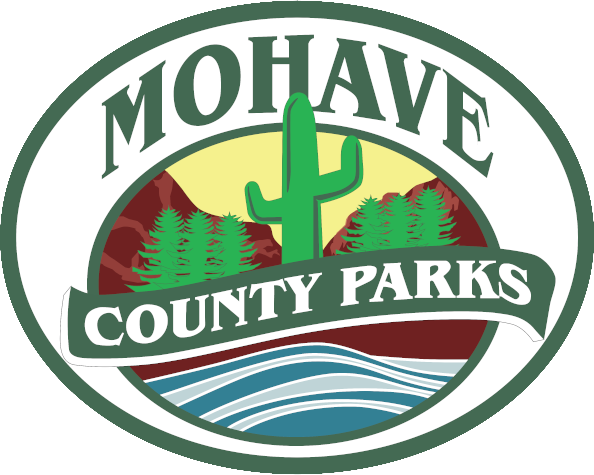ADA Transition Plan
MOHAVE COUNTY, ARIZONA AMERICANS WITH DISABILITIES ACT TRANSITION PLAN
Background
On July 26, 1990, the Americans with Disabilities Act (ADA) was approved by Congress. ADA is a civil rights statute that prohibits discrimination against individuals with disabilities; ADA implementing regulations for Title II prohibit discrimination in the provision of services, programs, and activities by state and local governments.
Designing and constructing pedestrian facilities in the public right-of-way that are not usable by people with disabilities may constitute discrimination.
The effects of this legislation over the past 27 years are wide-ranging, and can be seen across the country in curb access ramps, lifts on busses, designated parking areas, sidewalks, and other public and private infrastructure.
Definitions
ADA/ADAAG: “ADA” refers to the Americans with Disabilities Act as contained in 42 U.S.C. Section 12101 et seq. “ADAAG” refers to the Americans with Disabilities Act Guidelines, codified at Appendix A to 28 CFR Part 36, and at Appendix A to 49 CFR part 37. “ADAAG Standards” refers to physical conditions that meet new construction and/or alterations standards set forth in ADAAG.
Compliant Curb Ramp: refers to a curb ramp that is constructed to comply with state and/or federal law (whichever provides a higher access standard) in place at the time of construction.
Curb Cut: The terms “Curb Cut” and “Curb Ramp” are used interchangeably.
Detectable Warnings: refers to truncated domes intended to provide a tactile differentiation at the transition between the curb and the street, assisting pedestrians with vision disabilities in determining when they enter the street.
Structurally Impracticable: refers to circumstances in which the unique characteristics of terrain prevent the incorporation of accessibility features (See ADAAG Section 4.1.1(5 a)).
Technically Infeasible: means, with respect to an alteration of a building, facility, or pedestrian way, that it has little likelihood of being accomplished because existing physical or site constraints or a lack of public right of way prohibit modification or addition of elements, spaces, or features which are in full and strict compliance with the minimum requirements for new construction and which are necessary to provide accessibility (See ADAAG Section 4.1.6(1)(j)).
Undue Burden: “Undue Burden” means and refers to an action that, if taken by Mohave County, would result in an undue financial and administrative burden. In order to demonstrate that removal of a barrier would constitute an Undue Burden, the decision must be made by the County Engineer, after considering all resources available. In preparing such a statement, the County Engineer may consider the usability of the existing facilities.
Grievance Procedure
Establishment of a formal Grievance Procedure is a requirement of the 1990 ADA. This grievance procedure may be used by anyone who wishes to file a complaint alleging discrimination on the basis of disability in the provision of services, activities, programs, or benefits by Mohave County.
The complaint should be in writing, should contain adequate contact information such as the person’s name, address, phone number, etc., and should detail the date, location, and description of the perceived discrimination.
The complaint should be submitted by the grievant and/or his/her designee as soon as possible but no later than 60 calendar days after the alleged violation to:
Steven P. Latoski, P.E., PTOE
Public Works Director
3715 Sunshine Drive
P.O. Box 7000
Kingman, AZ 86402-7000
(928) 757-0910
Within 15 calendar days of receipt, the ADA Coordinator or his designee will meet with the grievant to discuss the grievance and possible resolutions. Within 15 calendar days of this meeting, the ADA Coordinator or his designee will respond in writing and in other requested formats explaining the position of Mohave County and offer options for substantive resolution of the grievance.
If this response does not satisfactorily resolve the issue, the grievant may appeal the decision within 15 calendar days to the County Manager or his designee.
Within 15 calendar days of receipt, the County Manager or his designee will meet with the grievant to discuss the grievance and possible resolutions. Within 15 calendar days of this meeting, the County Manager or his designee will respond in writing and in other requested formats with a final resolution.
Applicable Standards, Specifications, and Design Details
Current relevant standards in Mohave County include, but are not limited to:
- Mohave County Standards, Specifications and Details
- Adopts:
- Maricopa Association of Governments (MAG) Manual of Standard Specifications, latest edition Maricopa Association of Governments (MAG) Uniform Standard Details, latest edition
- Adopts:
- Mohave County Land Division Regulations
- Mohave County Zoning Ordinance
- Mohave County Standard Detail Nos. 60, 61, and 62
Action Plan
Removal of barriers to the mobility of disabled persons will be accomplished through the following approaches:
- Citizen Requests
This approach will be subject to Public Works engineering evaluation, finding and recommendation on barrier qualification, removal, or infrastructure (re)construction.
- New or Remodeled Capital Construction
Whenever the County participates in the design and construction of new capital improvements or the remodeling/rehabilitation of existing capital assets, access considerations shall be specifically examined under applicable standards, specifications, and details to the contemplated work, and compliance so noted. This approach applies to new and remodeled building facilities as well as pedestrian pathway and roadway construction.
- New Permitted Development and Alterations
The County will monitor all permitted construction work to ensure that it conforms to the requirements set forth in applicable standards, specifications, and design details.
Locations where access features as designed do not fully conform to access standards adopted by the County will not be approved for construction.
- County Monitoring of Work to Existing Driveways
The County will continue to monitor all permitted work for existing driveways. The County will not approve any permit to modify an existing driveway that would create an unreasonable cross-slope or worsen an existing cross-slope within the path of travel along pedestrian travel ways.
Contact Us
Mohave County Parks
Book Now
(877) 757-0915
